Anatomy of the lower urinary tract
The bladder is a tubular tract that is majorly composed of smooth muscles that intertwine against each other in a rather disorganized fashion. The muscles give it the flexibility that characterizes this, thus accommodates the urine that fills up the bladder. The base of the track is firmer compared to the rest of the surface and hosts the urine entrance and exit points. The makeup of the base of this tract is basically twofold; the trigone and bladder neck. In both male and female, the differences between the organs are quite notable, although the external urethral sphincter features in both serve as the section of prime continence. The location of “the external urethral sphincter appears at the periphery of the urethra; it’s composed of skeletal muscles” (Blok 2002). In both sexes, the muscles originating from the floor of the pelvis dictate the movement and actions of the sphincter.
The general structure of organ in the male and female is also distinct; in essence, the male urethra happens to be longer and has four regions namely “prostatic urethra, membranous urethra, bulbar urethra and pendulous/penile urethra” (Blok 2002). For men, the major zone of continence stems from the urethra, which is in this case saturated with membranes. On females, the urethra is shorter and is merged with the frontal walls of the vagina. Continence, in this case, is attributed to the reactions of the external sphincter, supported by the walls of the vagina and the reluctance of both the frontal and subsequent linings of the interior of the urethra.
Whatever maintains the continence is an incessant force that is born of the standing posture of humans together with the abdominal pressure “generated by the striated muscle activity that combines to exert continuous force on the outflow tract, and thus a continuous occlusive force is sustained” (Blok 2002). This is achieved by “dynamic forces in both the smooth and striated muscles of the urethral which are actively involved” (Blok 2002). This is aided by the presence of a multifaceted network of the nervous system that includes several motor nerves.
The sonographic appearance of the normal urinary bladder
The general structure of a normal urinary tract is cystic. Its shape alternates between the variants of a round shape, an oval structure to a quadrilateral sometimes (Strauss & Dushnitsky 2000). On the wall of the bladder are four layers that do not have sharp distinctions from each other. These layers are as follows; the mucosa, the submucosa, the muscular layer (inner longitudinal muscle, middle circular muscle, outer longitudinal muscle), and the serosal surface (Strauss & Dushnitsky 2000).
Two thin lines which run parallel to each other, and are hard to be identified. These are; the hyperechoic serosa which is also referred to as the perivascular fat interface and the hypoechoic muscularis (Strauss & Dushnitsky 2000). A hypoechoic lane of tissue runs parallel to the surface of the mucosa. The contrasting feature that is mucosal and its adjacent submucosal layers can easily be distinguished once the bladder is empty (Strauss & Dushnitsky 2000). In females, the frontal part of the “urethra is visible on image slides, but the central and distal images are hardly visible due to the silhouette cast on it resulting from imaging the pubic bone” (Strauss & Dushnitsky 2000). In males, however, a greater percentage of the parts are visible through the demarcation from the prostatic parenchyma, the penile urethra which has a high concentration of membranes is not so clear. These are not within the pelvic canal and can be easily viewed. The appearance of the “urethra is identifiable by a miniature protrusion of mucosa, their location being on both sides of the midline at the ureteral orifices” (Strauss & Dushnitsky 2000).
Important information obtained through the visualization of the ureteric jets
Color Doppler is an important process in ureteral observations. From the process and after assessing the colour Doppler pattern with the jet flow, it gives invaluable information while carrying out a clinical diagnosis. Through the process, one can diagnose nephrolithiasis and other conditions (Platt & Rubin1995). The process is also priceless in the diagnosis of renal calculi. Nevertheless, the process is used in the demonstration of ureteric jets that result from the transmission of peristaltic waveforms that originate from the pelvic pacemaker vital in showing the diagnosis for any infections therein (Platt & Rubin1995).
Longitudinal view of the bladder
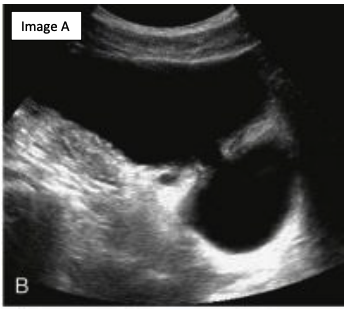
The above condition is referred to as bladder diverticulum.
Definition of the pathology
In simple terms, bladder diverticulum is an inborn (congenital) or acquired disorder that manifests as pouches seen on the bladder walls. These regions represent weak spots on the bladder that protrude on the wall as an indication of weak bladder wall lining (Squire & Novelline 1997).
Complications caused by the pathology
Large bladder diverticulum can give rise to other disease complications. However, the minute diverticulum is normally asymptomatic. Among the complications that may result from the large bladder, diverticulum includes: “hematuria, urinary tract infection, acute abdomen due to its rupture, acute urinary retention, or neoplasm formation” (Blumfield et al. 2005).
The anatomical difference between the composition of the above pathology and the normal bladder wall that makes malignant pathology grow faster
Whatever anatomical difference of the bladder wall that makes malignant pathology grows faster is the obstruction of the bladder that occurs, in most cases, during old age.
Transitional cell carcinoma (TCC) as the most common bladder malignancy
The aetiology/predisposing factors of TCC
Much as TCC is a rare disease, it builds up from other factors that breed it. These include smoking cigarettes, which directly exposes one to cancer of the bladder. Chances of one getting this infection are five times more with smokers as compared to non- smokers. Others include the exposure to harmful substances in major industries such as aniline used in dyeing (Punyavoravut & Nelson1999). Organic chemicals that are very useful in the rubber and other manufacturing industries also pose as risk factors. Exposure to chemotherapy also increases the risk while internally chronic recurring infections that cause bladder stones may also lead to the above (Punyavoravut & Nelson1999). Schistosomiasis, a medical condition witnessed in some parts of Africa and also the Mediterranean area gives the bladder lining an itching sensation. When the parasites causing the condition get into the bladder, the tumour appears to be stimulated and grows faster (Punyavoravut & Nelson1999).
The potential clinical presentation of a patient with TCC?
The patients’ appearance is sometimes asymptomatic, gross hematuria, and sometimes patient report pain. Renal colic is experienced by the patients and is manifested as blood clots (Punyavoravut & Nelson1999).
The histology of TCC. Diagnosing a potential tumour in the bladder
Ideally, TCC presents the most common “primary malignancy of the urinary tract and may be found along its entire length, from the renal pelvis to bladder” (Punyavoravut & Nelson1999).
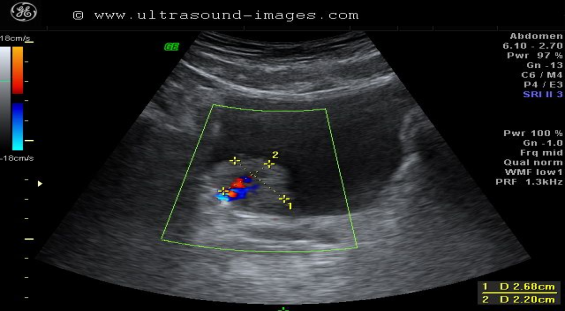
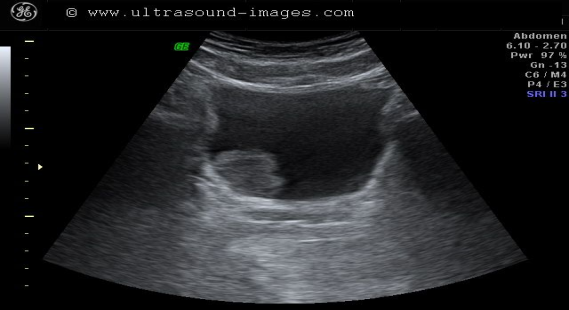
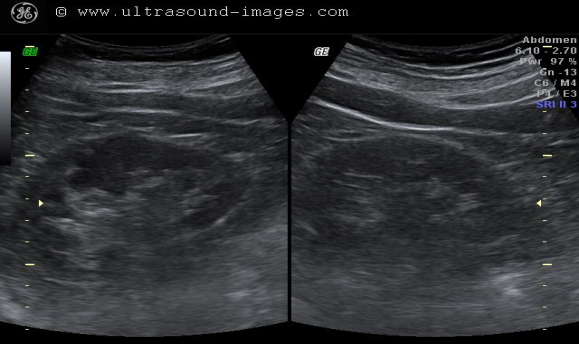
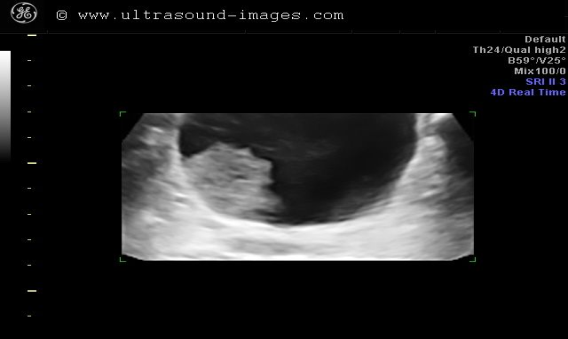
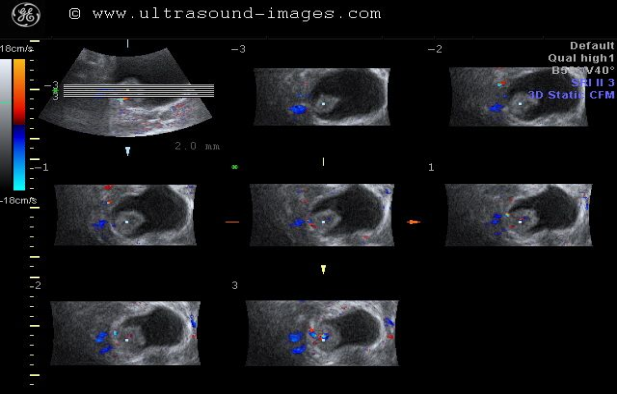
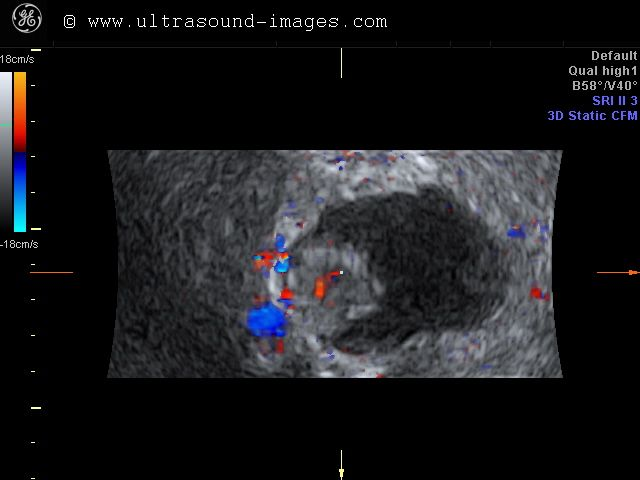
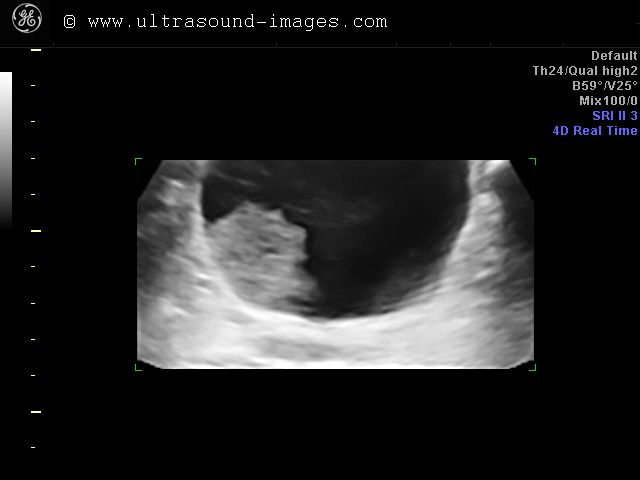
Techniques to use during the ultrasound examination to obtain more information about the pathology

I would use a colour Doppler method to tell apart the features at the surface as they are and the size of the bladder mass itself.
Sonographic appearances of Crohn’s disease
With advances in the radiological cum endoscopic techniques, interesting developments about imaging of inflammatory bowel malady have emerged. These techniques have “led to a new and exciting area in the exploration of the gastrointestinal tract, especially in Crohn’s disease patients by using ultrasound with oral or intravenous contrast” (David & Sachar 2010). To this effect, the below images manifest the contrasting appearances of sonographic disease.
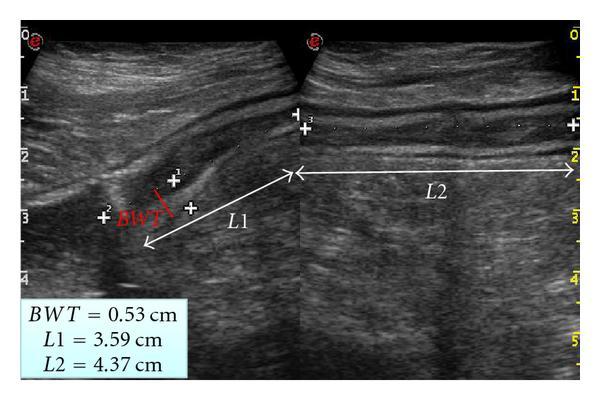
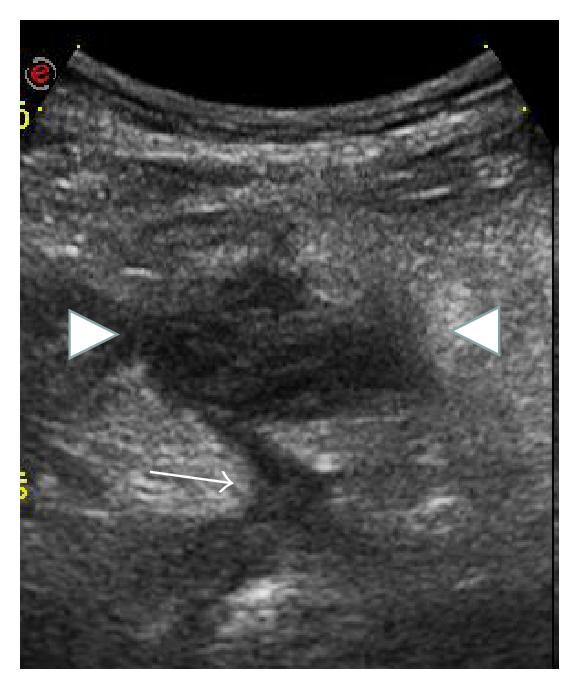
In figure (a) the red arrow shows “enteroenteric fistula between diseased ileal loops with a bowel wall thickness (red arrows)” (David & Sachar 2010). On the same patient, as exhibited in the image (b), is fistula (shown by white arrow) that manifests as a small abscess.

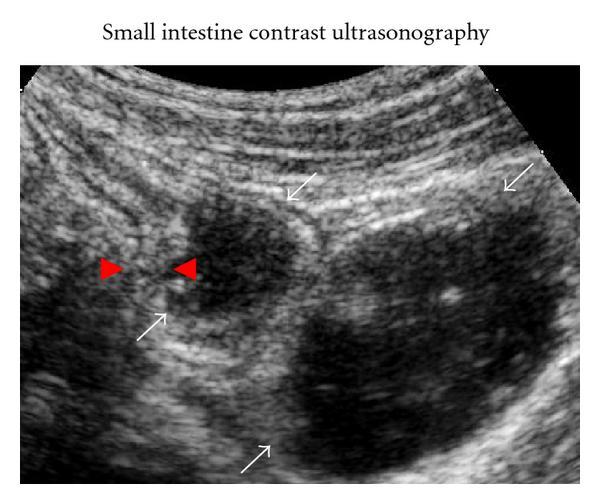
Figure (a) shows Crohn’s “disease stenosis and prestenotic dilation, well defined in (b)” (David & Sachar 2010). As portrayed in the “picture, the red arrows point at the bowel wall thicknesses while the white arrows in (b) is a manifestation of prestenotic dilation” (David & Sachar 2010).
‘Normal’ appendix and acute appendicitis
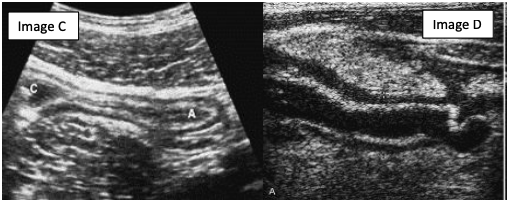
Patients with acute appendicitis have a visible appendix that is easy to identify with the full sonographic features. According to Brian (2013), this is typified by, “fluid localized to the right peritoneal reflection or periappendiceal region, or both” (Brian 2013), there is presence of a high concentration of pelvic fluid and right anterior quadrant adenopathy.
The clinical significance of McBurney’s point
The clinical significance of McBurney’s point is that it assists in the early diagnosis of appendicitis simply by pressing a given point at the lower abdomen to the right. This area he described as the “seat of the greatest point” (Brian 2013).
The ‘graded compression’ term
The term graded compression refers to one of the major methodologies used in confirmation or excluding the presence of acute appendicitis within a patient. The emphasis on the above method as being the best for diagnosing acute appendicitis is unrivalled since it conveys the images in the accurate real-time descriptions.
Patients with clinical symptoms of appendicitis may have mesenteric adenitis
Mesenteric adenitis
This refers to inflamed lymph glands in the abdomen. These result in abdominal pain in the tummy. The condition is rather mild and usually goes away without treatment. It is common in children under 16 years
The sonographic criteria for a normal lymph node?
There are several ways present in the literature on how one can tell a normal lymph node from the one with an anomaly. Ideally, some of “the criteria used include nodal border, size, shape, distribution and echogenic hilus” (Fijten & Blijham 1988). However, these criteria are inaccurate, for they cannot clearly distinguish the two. This shortfall can be addressed by criteria including matting and intermodal necrosis which distinguishes abnormal lymph from a normal one.
The way abnormal lymph node appears on ultrasound
The appearance of lymph nodes is characterized majorly by the metastases and lymphoma. Metastases are usually present with patients suffering cancer of either the neck or head. The lymphomatous nodes are common within neck nodes. Further diagnosis is needed to asses this as its treatment varies with that of neck lymphadenopathy.
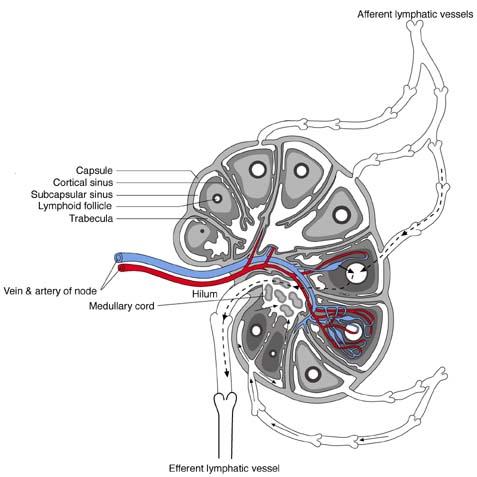
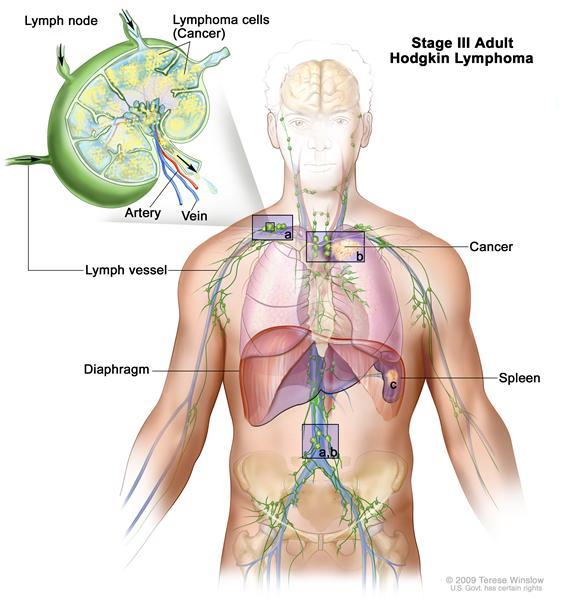
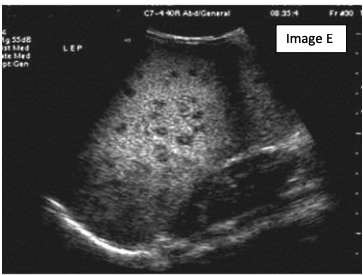
The image in figure E below represents a splenic marginal zone lymphoma (SMZL). The organ exhibits a change in the architecture of a region on the spleen otherwise the white pulp. Whatever happened is that the B-cells of the lymphoma have functioned to modify the surface of the spleen peculiarly. On a closer spectacle, the mantle zone present in the splenic follicles exhibits abrasion. This is a manifestation of a thorough invasion of the neoplastic cells on the same (Nor 2007).
References
Blok, F 2002, Central pathways controlling micturition and urinary continence, Urology, vol. 59. no. 5, pp. 7.
Blumfield, E, Nayak, G, Srinivasan, R, Muranaka, T, Blitman, M, Blumfield, A & Levin, L 2005, Ultrasound for Differentiation Between Perforated and Nonperforated Appendicitis in Pediatric Patients, Public med journal, vol. 6. no. 8. pp. 183–93.
Brian, B 2013, Mesenteric Adenitis Imaging. Medscape journal. vol. 94. no. 1, pp. 37-39.
David, B & Sachar, D 2010, Crohn’s Disease: The Merk Manual, Department of Education, Science and Training, Canberra.
Fijten, H, & Blijham, H 1988, Unexplained lymphadenopathy in family practice. An evaluation of the probability of malignant causes and the effectiveness of physicians’ workup, J Fam Pract, vol. 27. no. 1, pp. 373–6.
Nor, O 2007, Robbins Pathologic Basis of Diseases. MBBS, vol. 60, no. 1, pp. 1-9, Academic Search Complete database. Web.
Platt, J & Rubin, J 1995, Role of renal Doppler imaging in the evaluation of acute renal obstruction, AJR Am J Roentgenol, vol. 164. no. 1, pp. 379-380.
Punyavoravut, V & Nelson, D1999, “Diffuse bony metastasis from transitional cell carcinoma of urinary bladder: a case report and review of literature”. Journal of the Medical Association of Thailand, vol. 82. no. 8. pp. 839–43.
Squire, F & Novelline, A 1997, Squire’s fundamentals of radiology (5th ed.), Cambridge, Harvard University Press.
Strauss, S & Dushnitsky, T 2000, Sonographic features of horseshoe kidney: review of 34 patients, J Ultrasound Med, vol. 19. no. 1, pp. 27-31.